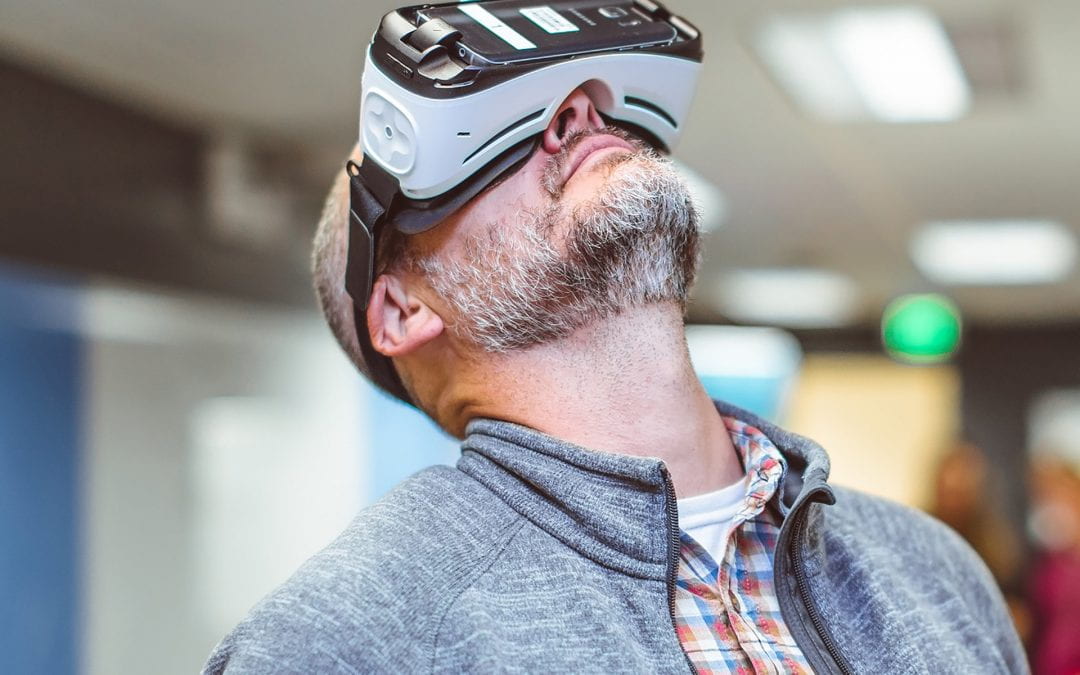
Apr 14, 2021 | Home Page
Penn State’s Teaching and Learning with Technology (TLT) is accepting applications for the 2021-22 academic year’s Faculty Engagement Awards. The theme for this year’s projects is interactive 360-degree video.
“We’re eager to work with faculty on investigating the benefits and best practices of creating and integrating interactive 360-degree video into coursework,” said Bart Pursel, director of innovation with TLT. “Also, immersive technology like this exemplifies the ‘Transforming Education’ and ‘Empowering Through Digital Innovation’ pillars of Penn State’s Strategic Plan.”
TLT’s Faculty Engagement Awards are allocated annually around a specific theme that combines sound pedagogy and digital tools. This year’s focus, interactive 360-degree video, intends to leverage technology that can immerse students in experiences they otherwise wouldn’t be able to access.
Penn State faculty with ideas for exploring interactive 360-degree video’s educational potential are encouraged to apply for this year’s Faculty Engagement Awards. The window for applications is open from Wednesday, April 14 to Friday, April 30, 2021. Award winners will be contacted in May.
Faculty Engagement Award recipients will collaborate with an instructional designer and technology support staff to identify effective in-class uses of interactive 360-degree video. Additionally, TLT researchers will help to assess the technology’s impact and share relevant findings with the Penn State community.
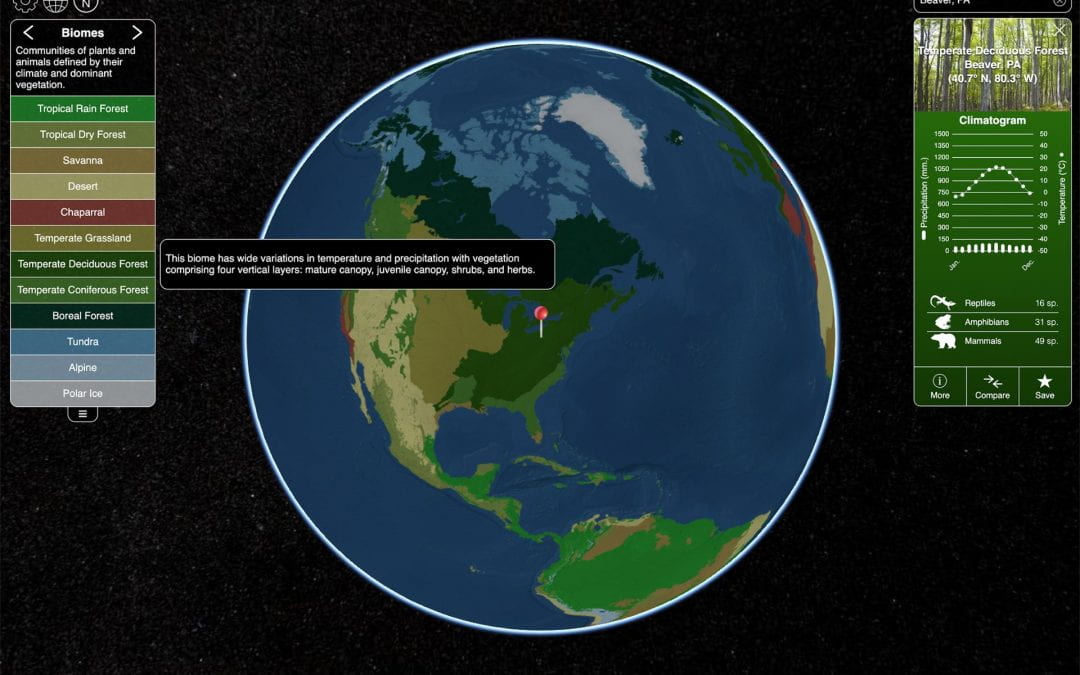
Feb 21, 2020 | Home Page
As video technology becomes more prevalent as a method of conveying information to learners of all ages, faculty are integrating videos into their courses in an interactive way to engage students. Beyond just watching videos in a lecture, faculty are also incorporating virtual reality (VR) immersive experiences into the classroom that allow for active learning, drawing students’ attention to the critical points being taught in the course.
Working with faculty, staff, and students across Penn State, Media Commons is a University-wide initiative aimed to provide support and resources to incorporate digital media projects into the classroom. Media Commons is a Penn State Teaching and Learning with Technology (TLT) service that creates and maintains innovative learning facilities, as well as empowering students to become media-creators.
Students across Penn State’s campuses – from Penn State Beaver to New Kensington, and Shenango – are trailblazing the future of education with immersive technology in and outside of the classroom.
“Media Commons has always focused on the intersection of multimedia-based creativity and the classroom,” said Nick Smerker of Media Commons. “By leveraging our years of experience supporting students and faculty in their sharing of compelling stories, we aim to bring this focus on storytelling into a whole new realm of expressive tech.”
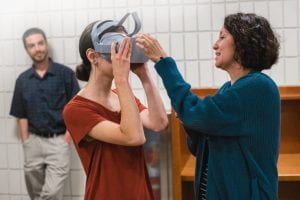
During a Media Commons showcase centered around a newly installed immersive experiences (IMEX) viewing pod, Penn State New Kensington students and faculty consulted with Media Commons staff to explore 360-degree cameras and virtual reality headsets. Yesenia Figueroa-Lifschitz, library assistant (right), helps sophomore Olivia Ahr try on a headset.
Last spring, an immersive experience (IMEX) viewing pod was installed at Penn State New Kensington. The new space is equipped with the same furniture used in the IMEX Lab at University Park. The ergonomic chairs are specifically designed to support a 360-degree range of body movement, allowing visitors to fully engage in a virtual reality environment.
Penn State New Kensington’s viewing pod has been used in a variety of ways, from an immersive art exhibit to the virtual exploration of South Korea, the 2019-20 pick for the campus’ Country of Focus study program. The viewing pod is open Monday-Thursday 8 a.m.- 8 p.m., Friday 8 a.m.- 5 p.m. for students to explore immersive technologies. To learn more or to reserve the pod, visit the Penn State New Kensington location page.
At Penn State Beaver, students in BIOL 220W (GN) Populations and Communities are connecting their learning material to the real world through 360-degree videos and interactive in-class activities. Cassandra Miller-Butterworth, associate professor of biology at the Beaver campus, has been teaching Populations and Communities for many years. Until this past spring, she would spend the first two weeks of class reviewing different biomes through a series of photos. “Most of my students were not engaged during this section of the course because I would describe a biome, and then show a photo of it. My goal was to try to make it more interesting and interactive to help students retain that information better,” says Miller-Butterworth.
With the help of Smerker, Miller-Butterworth was able to give her students an interactive in-class activity that depicts the twelve terrestrial and six marine biomes. Navigating through an interactive BiomeViewer map, students discovered different biomes with descriptions of its distinguishing features as well as search specific locations on the globe to explore additional information on climate, plant life, and animal species.
Smerker also helped Miller-Butterworth find and upload 360-degree immersive videos of the biomes to the Penn State IMEX Lab’s Experience Catalogue, an evolving list of 360-degree videos and virtual reality apps of varied disciplines, curated by the Media Commons team to engage students through the use of immersive content.
Miller-Butterworth’s students were able to launch a 360-degree video of a biome directly on their phones by clicking on a link to the content in the Experience Catalogue, which corresponded to the respective biome on the interactive map. Students then inserted their phones into a VR headset, allowing them to immerse themselves in the selected biome.
Sophomore Heaven Bowman enjoyed the immersive videos, which expanded her enthusiasm in the subject. “I loved how the technology enabled me to have such a hands-on experience in the classroom. I completely felt like I was in the rainforest and the desert, so it allowed me to understand more of the ecological aspects of the biome. It was engaging and made me want to experience more.”
Miller-Butterworth says anything that brings abstract concepts to life for students is essential. She points to this generation’s affinity for technology and watching videos, especially on their phones. “If you can bring those [technology] skills they already have and things they enjoy doing into the classroom, that helps them stay engaged and retain more information than a traditional lecture.”
The use of 360-degree videos of biomes in the classroom was first explored by 2018 TLT Faculty Fellow and associate teaching professor of biology, Karen Kackley-Dutt, to provide students the opportunity to observe Earth’s biomes for themselves through an immersive experience.
At Penn State Shenango, assistant teaching professor of nursing Maureen Dunn has also been very successful in implementing immersive reality approaches from her time in the 2018-19 Blended Learning Transformation (BlendLT) cohort, a program supported by TLT.
Dunn’s NURS 417 Family and Community Health Concepts, taught in spring 2019, was transformed from a fully face-to-face course to a blended environment. Teaching with immersive reality is appealing to Dunn because her students are adult learners. Most have full-time nursing jobs, often with long shifts, and families, which make it difficult to attend class. Her students appreciate the flexibility to complete assignments at home or at a time that fits with their schedule.
One assignment that posed a challenge for nursing students was a windshield survey. During the windshield survey, students were asked to go into the community to identify both the benefits and challenges in health education and local services.
Working alongside TLT staff, Dunn recorded eight different 360-degree videos that her students could view anywhere on their phones to complete the windshield survey. Students watched these videos, used Adobe Premiere to make edits, and through VR headsets, they learned more about what community health resources were available for individuals.
Smerker is enthusiastic about the 360-degree videos and their use in this type of course going forward. “Students benefit from being able to make informed decisions about how they tell the stories that matter to them. Whether as producers or consumers of immersive content, this fluency in technology-aided storytelling will be invaluable in sharing information in the years ahead.”
Instructors interested in starting to explore immersive reality in the classroom can explore the IMEX Lab’s Experience Catalogue’s digital resources. Media Commons also provides interactive workshops to teach students how to use iMovie and 360-degree video equipment to create immersive reality videos.
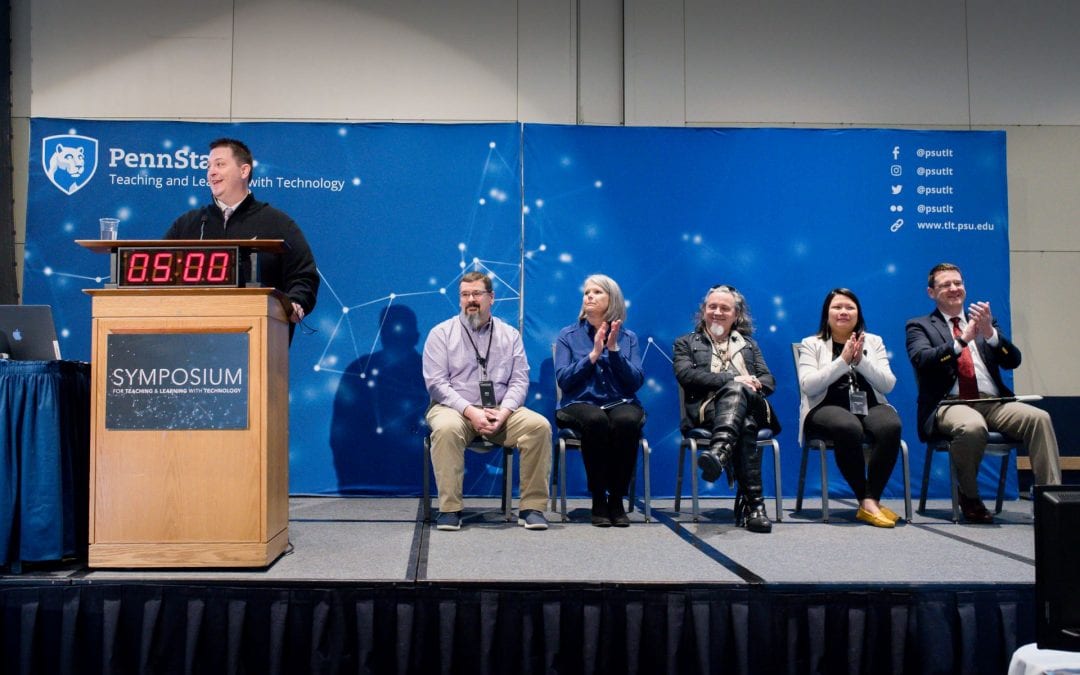
Mar 29, 2019 | Home Page
On Saturday, March 16, more than 500 attendees packed into Presidents Hall at The Penn Stater Hotel and Conference Center to kick off the 26th Symposium for Teaching and Learning with Technology at Penn State. One of the most innovative professional development events of the year at Penn State, no other conference promises to spark your imagination and stoke your curiosity for what is possible for the future of higher education.
In her opening remarks, Jennifer Sparrow, senior director of Teaching and Learning with Technology, touched on Penn State’s commitment to forward-thinking with initiatives such as President Barron’s vision for One Penn State 2025, a guiding framework for University-wide education innovation with a focus on student success and lifelong engagement. “I am proud that Penn State continues to be cutting-edge and Teaching and Learning with Technology collaborates with faculty to explore how innovative technology can transform education to advance student learning.”
Penn State leads the charge in reimagining student learning by tackling the burning discussions in higher education on topics such as immersive learning, connecting education to the workforce of the future, and promoting access and equity.

Keynote speaker Dan Heath addresses a crowd of more than 500 attendees at the 2019 TLT Symposium at The Penn Stater Hotel and Conference Center.
After the buffet breakfast, four-time New York Times bestselling author and a Senior Fellow at Duke University’s CASE Center, Dan Heath delivered the keynote address on how to make ideas stick. “Our memories are leaky, fallible, and they deteriorate,” says Heath. “For an idea to stick, it needs to be understood, remembered, and change something.”
Citing the research done by Dr. Michael Palmer, professor of chemistry and director of the Center for Teaching Excellence at the University of Virginia, Heath captivated the audience with his explanation of how Dr. Palmer used learner-centered, backward-integrated design principles to convince instructors to rethink how they create a syllabus to teach their courses. By starting with a goal of what is most important for students to take away from a course and working backward to create the activities and assessments, the core ideas have a chance of sticking long after students leave the classroom.
Heath co-authored four must-read business books, with his brother Chip, including Made to Stick, Switch, Decisive, and their latest, The Power of Moments.
Energized by the keynote speaker’s message, attendees dashed to the concurrent sessions—two before lunch and two afterwards. The most popular sessions covered topics including 3D printing, 360-degree videos, open educational resources, learning the art of storytelling, the future of digital fluency, and leveraging prototypes of artificial intelligence applications to support data empowered learning at Penn State.
The most anticipated aspect of the Symposium every year is the Open Innovation Challenge, where five faculty innovators have five minutes to present their idea in the hopes that it will ignite the attendees’ curiosity and earn their votes as the most impactful.
Professor of Astronomy Chris Palma envisioned technology that will help students embody solar system formations; Faith McDonald, professor of English, hoped to prepare students with digital stories to face workplace challenges; Dr. Matthew Woessner, professor of Political Science, wanted to create 360-degree videos to take students to distant places through virtual reality; Josephine Wee, assistant professor of food science, wanted students to reimagine classrooms without textbooks and embrace interactive content in real-time; and Rodney Allen Trice, professor of practice in the graphic design department of the Stuckeman School at Penn State, won the challenge with his idea “Walk a Mile,” a series of 360-degree videos and photos that create an immersive experience to invoke empathy. Penn State’s Stuckeman School also houses graduate and undergraduate degree programs in architecture and landscape architecture.
Over the course of the year, Trice’s idea will be explored and developed with the help of TLT staff. “Working on the Open Innovation Challenge is the highlight of my year,” explains Zach Lonsinger, learning experiences designer for Teaching and Learning with Technology. “I enjoy having the opportunity to meet and work with amazing faculty who have this contagious enthusiasm and passion for transforming teaching and learning with their big ideas.”
The conference ended with faculty networking over scoops of Penn State Berkey Creamery ice cream while trying out some new technologies such as test driving a BEAM robot and stepping into virtual reality with headsets at the Discovery sessions.
The Symposium for Teaching and Learning with Technology brings together faculty, staff, and innovators to inspire new ideas for what is possible in the future of higher education. It takes one “sticky” idea to inspire innovation that changes the world. From Gutenberg’s printing press to Thomas Edison’s light bulb, curiosity fuels learning, and educators are charged with stoking it.
“It’s incredible how dedicated our faculty, staff, and students are to show up at 7:30 a.m. on a Saturday morning to share the innovative things that they are doing in the classrooms and to learn more about what is happening in the teaching and learning community at Penn State,” says Sara Davis, 2019 Symposium chair and Teaching and Learning with Technology instructional designer. “I want to thank everyone who attended the 2019 Symposium and mark your calendars, the 2020 TLT Symposium will be on Saturday, March 21, 2020. I hope to see everyone next year.”
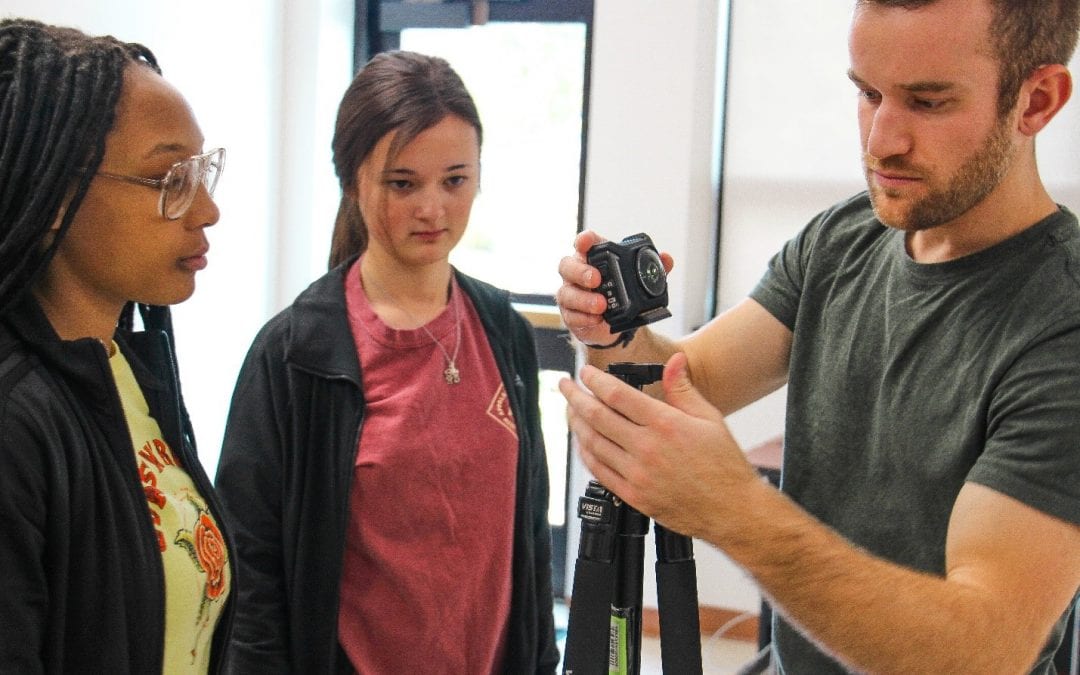
Feb 13, 2019 | Home Page
Immersive technologies such as 360-degree videos will revolutionize the future of forensic science, giving police and criminologists a tool to visualize different crime scenes and ultimately, become better investigators. Through the Berks Teaching & Learning Innovation Partnership Grant, Penn State Berks students in CRIMJ 210, a course on Policing in America, are learning to create 360-degree videos of crime scene scenarios.
These videos are viewed by their peers in CRIMJ 100, an introductory course to Criminal Justice, to learn about topics such as self-defense, defense of others, and defense of property.
“The project transforms student learning on two levels: It allows students to engage in creative collaboration related to a course topic, and students get to ‘experience’ the scenarios presented by the 360-degree videos created by their peers,” said Mary Ann Mengel, an instructional multimedia designer for Penn State Berks’ Center for Learning & Teaching.
During the fall 2018 semester, students were separated into five teams to research their chosen topic, brainstorm ideas for a storyboard, create the dialogue, assemble props, and select locations to film. Like good police work, careful research and attention are required to recreate crime scene scenarios that accurately represent the characters, props, settings, and timing of events.
Due to the limited examples of 360-degree storyboards, Mengel designed a template for students to visualize how their scenes would play out through the 360-degree camera. The camera’s vantage point positions the viewer within the scene, and the viewer can focus their attention in any direction. By design, minimal video editing is required.
“This should be the standard,” said Deb Dreisbach, lecturer in criminal justice. “I’m always thinking outside of the box and as we continue to come up with other ideas for these videos, we will institute them.”
Dress rehearsal videos were peer-reviewed before students produced their two- to three-minute-long final videos in November 2018. Assessment questions were written by the teams, which students in future classes will answer after exploring the immersive scenarios.
“In having to develop questions, students are analyzing it a lot differently, and enjoying it more,” Dreisbach said. Dreisbach plans to expand the library of scenarios as she repeats the assignment in future semesters.
These videos significantly enhance how criminal justice students learn. Students are better engaged in the course through extended classroom discussion and reflection.
“By experiencing 360-degree videos created by peers, students are provided a safe way to be present ‘on the ground’ at what might otherwise be a dangerous policing situation,” Mengel said. “The result is an engaging and memorable learning experience.”





